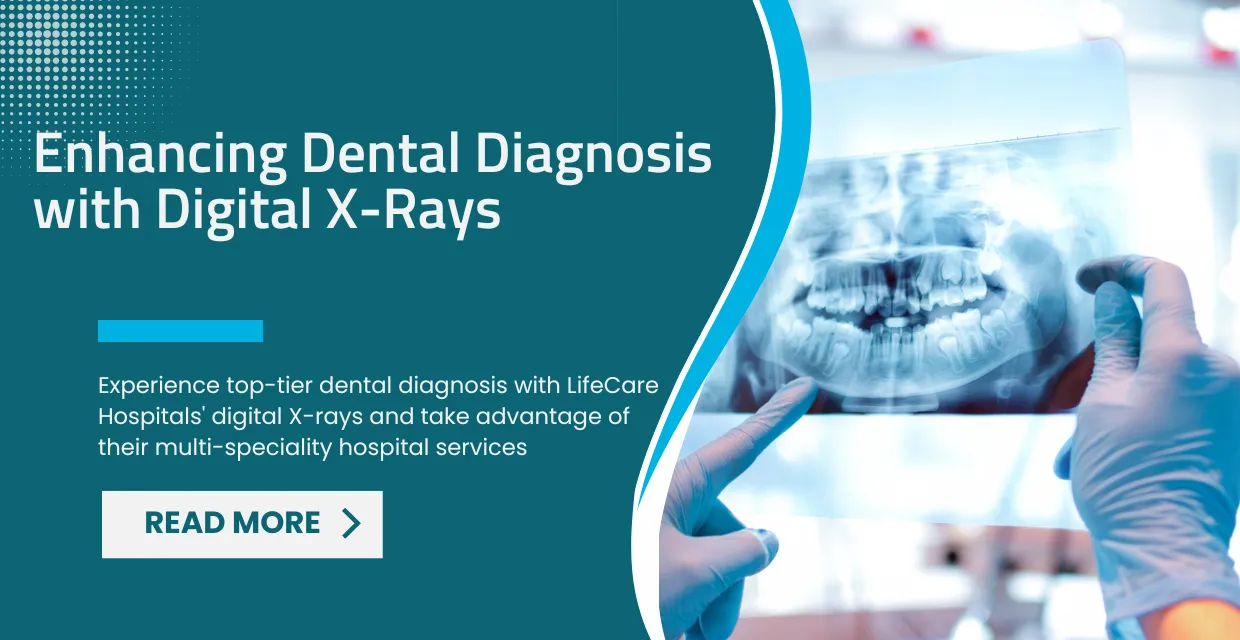Digital X-rays have revolutionized the field of dentistry, providing significant advancements in dental diagnosis and treatment planning. With the transition from traditional film X-rays to digital imaging technology, dentists can now capture highly detailed and precise images of the teeth, gums, and surrounding structures. LifeCare Hospitals, committed to providing state-of-the-art healthcare services, recognizes the importance of digital X-rays in improving patient care and treatment outcomes.
The Evolution from Film to Digital X-Rays
In the past, dental X-rays were captured using traditional film technology, which required chemical processing to develop the images. This process was time-consuming and had limitations in terms of image quality and storage. With the introduction of digital X-ray technology, dentistry underwent a transformative change. Digital X-rays replaced the need for film and chemical processing, allowing for immediate image acquisition, viewing, and analysis.
Advantages of Digital X-Rays
Digital X-rays offer numerous advantages over traditional film X-rays, making them an indispensable tool for dental diagnosis. Some of the key benefits include:
1. Enhanced Image Quality
Digital X-rays produce high-resolution images that provide exceptional detail. The clarity and precision of these images allow dentists to visualize even the smallest dental structures, enabling more accurate diagnosis and treatment planning.
2. Immediate Image Viewing
With digital X-rays, there is no need to wait for film development. Images can be viewed instantly on a computer monitor, eliminating the waiting time for results. This immediate access to images facilitates faster diagnosis and treatment decisions.
3. Image Manipulation and Enhancement
Digital X-ray images can be easily manipulated and enhanced for better visualization. Dentists can adjust the brightness, contrast, and zoom levels, as well as apply filters to highlight specific areas of interest. These capabilities aid in identifying dental issues that may be challenging to detect in traditional X-rays.
4. Efficient Storage and Retrieval
Digital X-rays eliminate the need for physical storage space required for film-based X-rays. Images can be stored digitally, reducing clutter and enabling easy retrieval whenever necessary. This streamlined approach improves the efficiency of dental practices and enhances overall patient care.
5. Reduced Radiation Exposure
Digital X-rays require significantly less radiation compared to traditional film X-rays. This reduction in radiation exposure enhances patient safety without compromising the quality of diagnostic imaging. It is especially beneficial for patients who require frequent X-rays or for vulnerable populations such as children and pregnant women.
Applications of Digital X-Rays in Dental Diagnosis
Digital X-rays are employed in various aspects of dental diagnosis to detect and assess dental conditions accurately. Some of the common applications include:
1. Detection of Tooth Decay
Digital X-rays enable dentists to identify early signs of tooth decay that may not be visible during a clinical examination. The detailed images help in determining the extent of decay and developing appropriate treatment plans.
2. Evaluation of Gum Health
Digital X-rays aid in the assessment of gum health by providing a clear view of the supporting bone structure. Dentists can identify signs of periodontal diseases, bone loss, and other gum-related issues, enabling timely intervention and effective treatment.
3. Identification of Dental Infections
Digital X-rays are instrumental in identifying dental infections, including abscesses and infected tooth roots. By visualizing the affected areas, dentists can determine the severity of the infection and devise suitable treatment strategies.
4. Assessment of Tooth Alignment and Development
Digital X-rays play a crucial role in orthodontic diagnosis. They provide insights into tooth alignment, eruption patterns, and jaw development, helping orthodontists plan orthodontic treatments such as braces or aligners.
Enhancing Dental Diagnosis with Digital X-Rays
Digital X-rays have transformed dental diagnosis by providing dentists with highly detailed, immediate, and easily accessible images. The advantages of digital X-rays, including enhanced image quality, immediate viewing, image manipulation, efficient storage, and reduced radiation exposure, have revolutionized dental practices. LifeCare Hospitals recognizes the immense value of digital X-rays in improving patient care and treatment outcomes and remains committed to utilizing the latest technologies for superior dental diagnosis.



